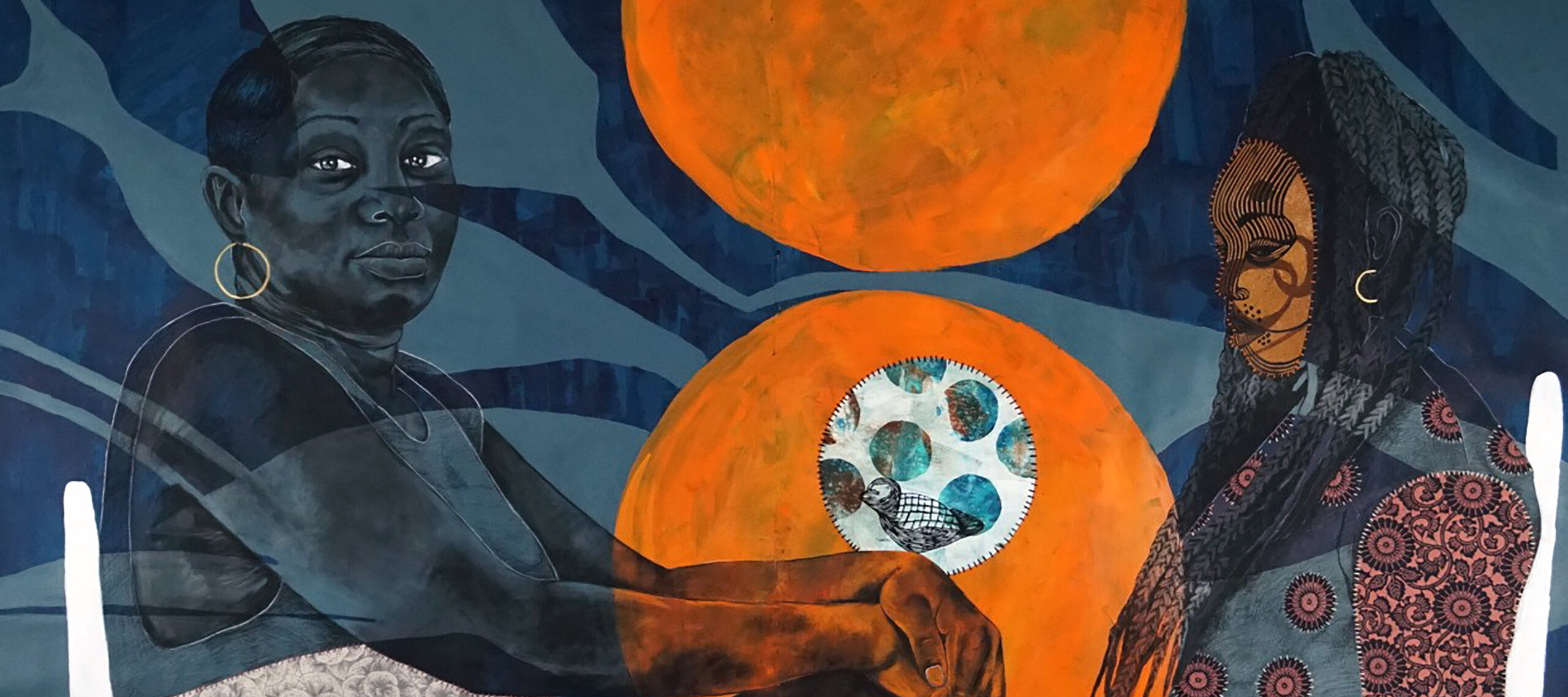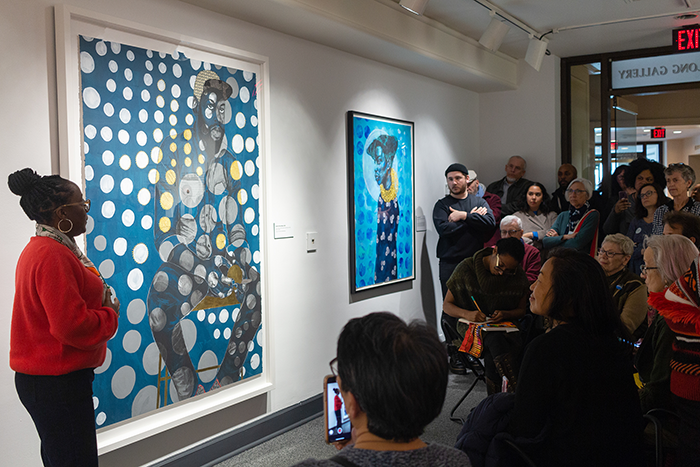I first encountered the work of Delita Martin (b. 1972) in 2017 at the University of Maryland’s David C. Driskell Center for the Study of the Visual Arts and Culture of African Americans and the African Diaspora. Her large-scale work Night Travelers (2016) was part of the exhibition Shifting: African American Women Artists and the Power of Their Gaze (March 2–May 26, 2017).

It was not only the size of the work that grabbed my attention, but the striking gaze of the woman in white, who looks directly out at the viewer. As I got closer to the work, I was enthralled by the detail: beautiful paper pieces hand-stitched directly onto the support paper, intricate layering of printed pattern and drawn elements, and the synergy of each element.
As a curator, I have the privilege of looking at a lot of art. When a work jumps out at me like Delita’s did, I often have trouble describing why I like it so much. I have come to understand this reaction as a marker of a great work. It also makes me want to share it with as many people as possible.
In early 2019, our curatorial team met to discuss possible exhibitions in NMWA’s Teresa Lozano Long Gallery. The gallery, though prominently sited near the main entrance and Great Hall, is a cozy space at just 27 x 15 feet—and Delita’s large works are not an obvious choice for such a space. However, I thought that featuring these powerful works in an intimate space would lead to a compelling, immersive experience.
In deciding which works to include in NMWA’s exhibition, I visited Myrtis Bedolla of Galerie Myrtis in Baltimore, Maryland, who represents Delita. Little did I know what a treat I was in for—not only because I got to see Delita’s new work, but also because Myrtis herself is a gem. In addition to lending works from her gallery, Myrtis connected me with local collectors of Delita’s works; it turns out that she has a large and dedicated fan base in the D.C./Baltimore region!
I wanted to share Delita’s work with our visitors to highlight this important artist and her work. The texture, saturated colors, and meticulous skill of her works are best seen in person. While this opportunity has been curtailed by the museum’s temporary closure, we have created an online exhibition, including audio commentary from Delita, so you can still experience the works. You can also read the exhibition brochure and an interview with the artist in the Winter/Spring issue of Women in the Arts magazine.

